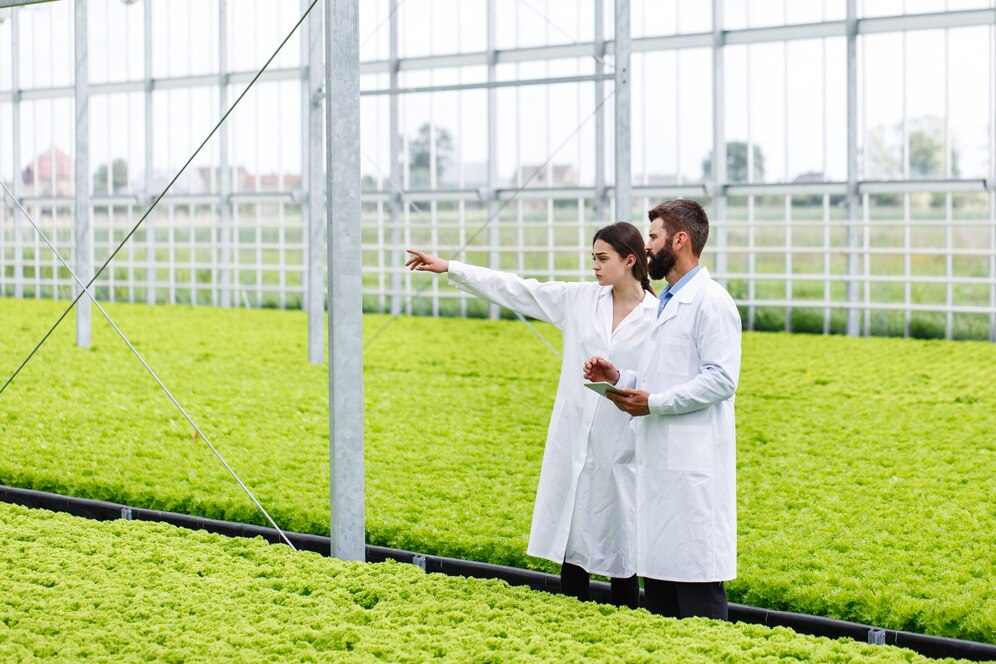The Impact of Nanobubbles Dissolved Oxygen on Pythium Mitigation
Pythium is a common pathogen in agriculture. It affects various crops and can cause significant losses. Farmers often struggle to manage this issue. New solutions like the use of Nanobubbles in water treatment, are needed to control Pythium effectively.
Nanobubble technology offers one potential solution. Nanobubbles can increase dissolved oxygen in water and soil. This increase in dissolved oxygen levels can significantly improve plant health and vigor. Healthier plants are better equipped to resist diseases, thus reducing Pythium infections effectively. Enhanced oxygenation also supports root growth and nutrient uptake. As a result, plants can grow more robustly, leading to better yields and overall crop quality.
This blog will explore the impact of nanobubbles on dissolved oxygen levels. It will also discuss their role in Pythium mitigation & treatment. Understanding these concepts can help farmers improve crop production.
Overview of Pythium
Pythium is a water mold. It thrives in wet soil conditions. This pathogen causes root rot and damping-off diseases. Crops can suffer when Pythium infects them. Young plants are particularly vulnerable. Symptoms include yellowing leaves and wilting. Farmers need effective strategies to manage Pythium.
Traditional control methods often rely on chemicals. These methods can be costly and less effective. Chemicals may also harm beneficial organisms in the soil. Farmers seek sustainable methods to address Pythium. New technologies, such as nanobubbles, show promise in this area.
Importance of Dissolved Oxygen
Nanobubbles dissolved oxygen is vital for plant growth. It supports root respiration and nutrient uptake. Low levels of dissolved oxygen can stress plants. This stress makes them more susceptible to diseases, including Pythium.
Increasing dissolved oxygen in the soil can benefit plants. It can enhance their health and vigor. This makes them more resilient against pathogens. Healthy plants are better able to resist infections.
Nanobubbles can significantly increase dissolved oxygen levels. This process can help improve plant growth. Higher oxygen levels can lead to healthier crops. This is particularly important in regions with poor soil aeration.
What Are Nanobubbles?
Nanobubbles are tiny gas bubbles. They measure less than 200 nanometers in diameter. These bubbles remain stable in water for long periods. Their small size allows them to dissolve oxygen efficiently.
Nanobubbles can increase the amount of dissolved oxygen in water. This feature makes them valuable in agriculture. They can enhance the oxygenation of irrigation water and soil.
Nanobubble technology also known as Microbubbles technology is gaining attention in agriculture. Researchers are studying its effects on plant health. The results are promising. Farmers may find nanobubbles to be an effective tool for managing Pythium.
How Nanobubbles Affect Pythium Growth
Research indicates that increased dissolved oxygen can inhibit Pythium growth. Higher oxygen levels create a less favorable environment for this pathogen. Studies have shown that nanobubbles can help achieve these elevated levels.
In one study, researchers examined the effects of nanobubbles on Pythium mitigation & treatment. The results indicated that increased dissolved oxygen levels reduced pathogen growth. Plants treated with nanobubbles showed improved health and vigor. This suggests that nanobubbles may effectively help control Pythium.
Farmers may find these findings beneficial. By incorporating nanobubble technology into their practices, they may mitigate Pythium infections.
Application of Nanobubbles in Agriculture
Integrating nanobubbles dissolved oxygen technology into agricultural practices is becoming more common. Several methods exist for introducing nanobubbles to soil and water. Specialized equipment can generate nanobubbles in irrigation systems, allowing for easy application.
Farmers can apply nanobubbles alongside traditional methods. Regular monitoring of plant health is crucial. Adjustments can be made based on observed results to optimize their use.
Successful application requires attention to detail. Farmers must consider factors such as water quality and soil conditions. Each farm may require a tailored approach to achieve the best results with nanobubble technology.
Future Research Directions
Research on nanobubbles is ongoing. Scientists are exploring their effects in various conditions. Future studies may focus on optimizing nanobubble production. This can enhance their effectiveness in agriculture.
Researchers are also examining other potential applications. Nanobubbles may benefit aquaculture and environmental remediation. Understanding these possibilities can broaden their use in different sectors.
As research progresses, new findings will emerge. Farmers should stay informed about these developments. This knowledge can help them make better decisions.
Key Takeaways
Nanobubbles can impact dissolved oxygen levels in agriculture. Their role in Pythium mitigation & treatment is significant. Increasing dissolved oxygen can enhance plant health and resilience.
Farmers face challenges with Pythium infections. Nanobubble technology offers a promising solution as it can help manage this pathogen sustainably.
Understanding the benefits of nanobubbles dissolved oxygen is crucial.The future of agriculture may benefit from these innovations.














Post Comment